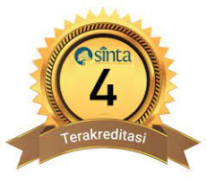DEVELOPMENT OF AN E-MODULE BASED ON AUTHENTIC LEARNING IN THE CONTEXT OF WETLANDS FOR ARCHIMEDES’ PRINCIPLE MATERIAL
Abstract
Physics is often considered an abstract subject, posing challenges for students to fully comprehend its concepts. The integration of advancing technology as a learning medium can facilitate students’ understanding, particularly when combined with authentic learning approaches that present concrete situations. This allows students to observe, analyze, perform, and even experience concepts firsthand. An e-module based on authentic learning within the context of wetlands can serve as an effective learning medium. This study aims to develop a valid and practical e-module based on authentic learning in the context of wetlands for teaching Archimedes’ principle. The validity of the e-module was assessed through expert validation involving three specialists, while practicality and readability were evaluated using student response questionnaires. The research follows the Research and Development (R&D) methodology using the ADDIE model, which consists of five stages: (1) Analysis, (2) Design, (3) Development, (4) Implementation, and (5) Evaluation. The study was conducted in the Physics Education program at Lambung Mangkurat University (ULM) in Banjarmasin. The validation results indicated that the material expert assessment achieved a score of 100%, the language expert assessment scored 93.75%, and the media expert assessment scored 91.67%, with an overall average validation score of 95.14%. The readability test yielded an average score of 91.38%, while student response assessments resulted in an average score of 93.89%. Based on these findings, it can be concluded that the developed e-module is highly feasible, valid, fully readable, and practical for use in learning.
Full Text:
PDFDOI: http://dx.doi.org/10.24036/17206171074








